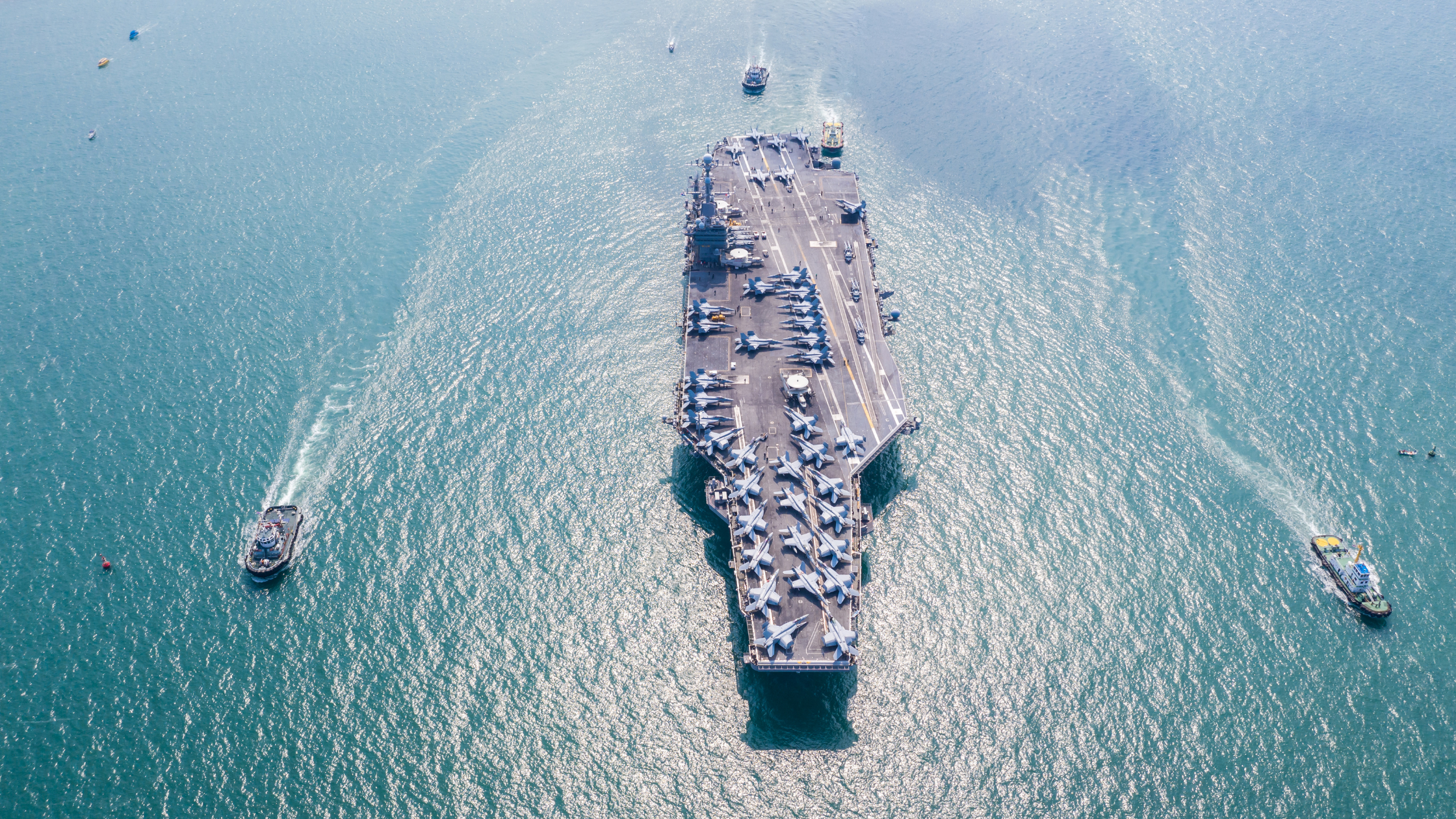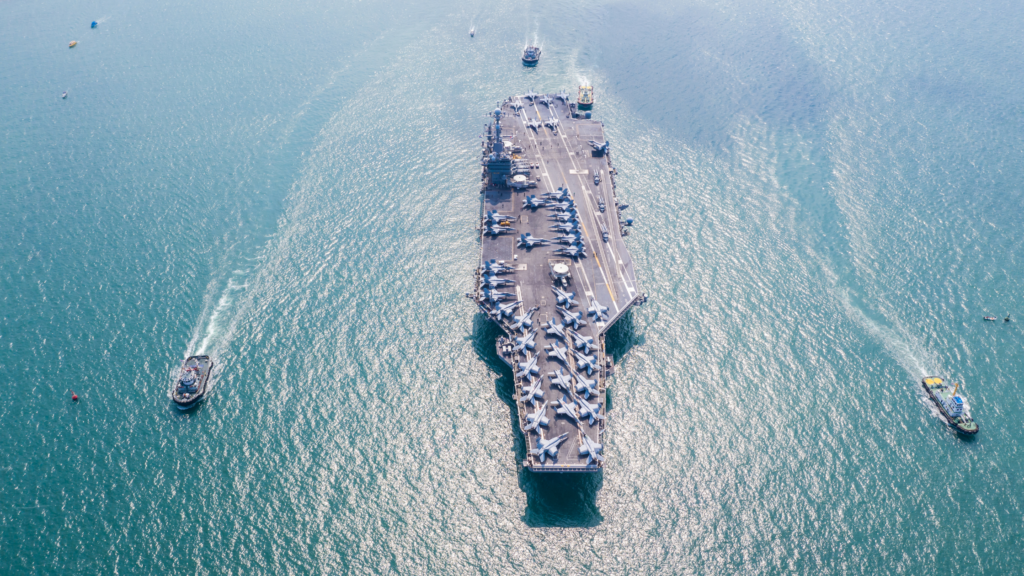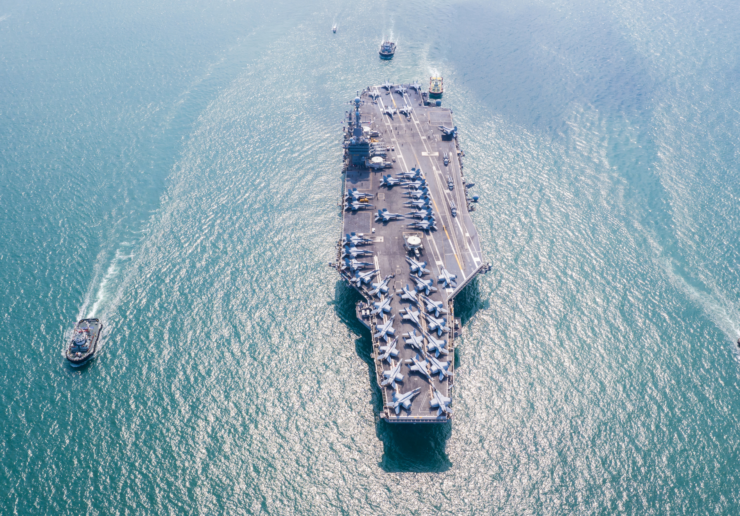
Metal is used in all kinds of environments, including applications with high exposure to water. In wet or underwater environments, we rely on marine grade metals to prevent everything from corrosion to failure. Marine grade metals are uniquely able to defend against the corrosive effects of water. They all benefit from the addition of alloying elements that in combination make the metal more corrosion-resistant. As a result, you’ll find marine grade metals in cargo ships, naval vessels, cruise ships, and wherever water is found.
Kloeckner Metals is a full-line steel supplier and service center. Download our structural plate spec sheet today and see what Kloeckner Metals routinely stocks.
By nature, most carbon steels are not appropriate for marine environments because iron is inherently vulnerable to oxidation and rust. However, there are carbon steels that are marine grade metals, including AH36, DH36, and EH36, that are all American Bureau of Shipping approved. Compared to their equivalents in the ASTM, they have a little more manganese and chromium, both of which allow them to have both higher strength and corrosion resistance.
Marine grade metals also include alloy steels with grades MD, ME, MF, and MG, which all have the strength that builders expect from regular alloy steels, but that also have enough corrosion resistance to be approved by the American Bureau of Shipping for shipbuilding. Applications for both carbon steel and alloy steel include structural shipbuilding plus other offshore structural applications.
Stainless steel is a mainstay in corrosion resistance for its high content of chromium. While all grades of stainless steel have some corrosion resistance, there are a few that are more appropriate for marine environments. The most common is grade 316. Featuring more molybdenum than is typical in austenitic (2xx-3xx) stainless steels, it is better able to resist pitting and other corrosion caused by saltwater.
Another, grade 304, is still a popular marine grade stainless steel, but because it has less molybdenum, you’ll find it less frequently in environments with high chlorine content. On the other hand, because it minimizes carbide precipitation, it can withstand extremely high temperatures. In general, the higher the percentage of molybdenum, the higher the corrosion resistance of the stainless steel. Common applications for marine grade stainless steels include marine structures, fasteners, and fittings.
Galvanized steel can be used in marine environments under specific conditions. Because of its zinc coating, galvanized steel is typically recommended for cool freshwater temperatures. Galvanized steel fares more poorly in warm temperature saltwater – the chlorides of the saltwater will rapidly corrode the zinc, and the higher temperature will speed up the corrosion. Typical applications for galvanized steel in marine environments include freshwater marine structures.
Among aluminum’s many benefits is its high strength and durability combined with its lower weight compared to steel. As a result, you’ll find that aluminum is a mainstay on the bodies of ships and aluminum I beams specifically for structural applications. Marine grades of aluminum can be found in the 5xxx and 6xxx alloys. One of the most popular marine grade alloys of aluminum is 5052. It is especially recommended wherever projects demand formability.

If strength is a more important consideration, grade 5083 may be recommended. 6061-T6 is another popular marine grade metal that finds itself in a wide range of marine applications because of its good corrosion resistance. It only suffers from slightly less durability than 5052. Much like the carbon and alloy steels, these aluminum grades benefit in their corrosion resistance from the addition of chromium and manganese. You’ll find these aluminum marine grades and others in structural shipbuilding and offshore structural applications, as well as in boat hulls, docks, and boat lifts.
There are a few copper-nickel alloys that are appropriate for marine environments, including C70600. Its alloying elements of nickel and manganese aid in durability and corrosion resistance. C70600 is joined by C71500, another alloy able to resist the corrosive effects of marine environments. Similar to C70600 to C71500 in its chemical composition, C71500 differs by the addition of even more nickel.
One advantage to copper is that its alloys lend it high biofouling resistance, meaning damage caused to piping from barnacles and algae. Applications for marine grade copper include marine fittings, fasteners, valves, and pumps, in addition to water lines and desalination equipment.
Marine brass is also known as naval brass because of its prevalent use in the military. The brass is often blended with tin and zinc to improve its corrosion resistance in water and leads to improved maneuverability. Available in several different alloys, the most common marine grade brass alloys are C46200 and C46400. The addition of zinc and tin helps the brass alloys resist corrosion in wet—and sometimes even in underwater—environments.
C48500 is also fairly common and differs from C48200 in the larger amount of lead that forms its chemical composition. You’ll find marine grade brass in marine fasteners, pumps, and fittings. Because brass can withstand very high temperatures, it is a good candidate for piping or condensers.
Finally, among bronze alloys, those alloyed with silicon like C65500 and aluminum like C95400 are better able to resist the corrosive effects of marine environments. In fact, aluminum bronzes and silicon bronzes were created precisely for marine use. Another grade that’s suitable for marine applications is C51000, which is alloyed with phosphor.
Like copper, bronze alloys also fight off algae, mussels, and other disruptive organisms. Marine grade bronze finds its way into marine fasteners and pipes. Because it produces little friction, it’s also popular material in propellers and propeller shafts.
Kloeckner Metals is a full-line steel supplier and service center. Kloeckner Metals combines a national footprint with the latest fabrication and processing technologies and the most innovative customer service solutions.

Steel base plates are fundamental elements employed in various manufacturing...
Metal fabrication is a critical process that transforms raw metal...
The solar industry has undergone a significant transformation by incorporating...

X
The Kloeckner Metals website uses modern technologies. Unfortunately, your browser doesn't support those technologies.
Download the latest version of one of these browsers to experience the site: